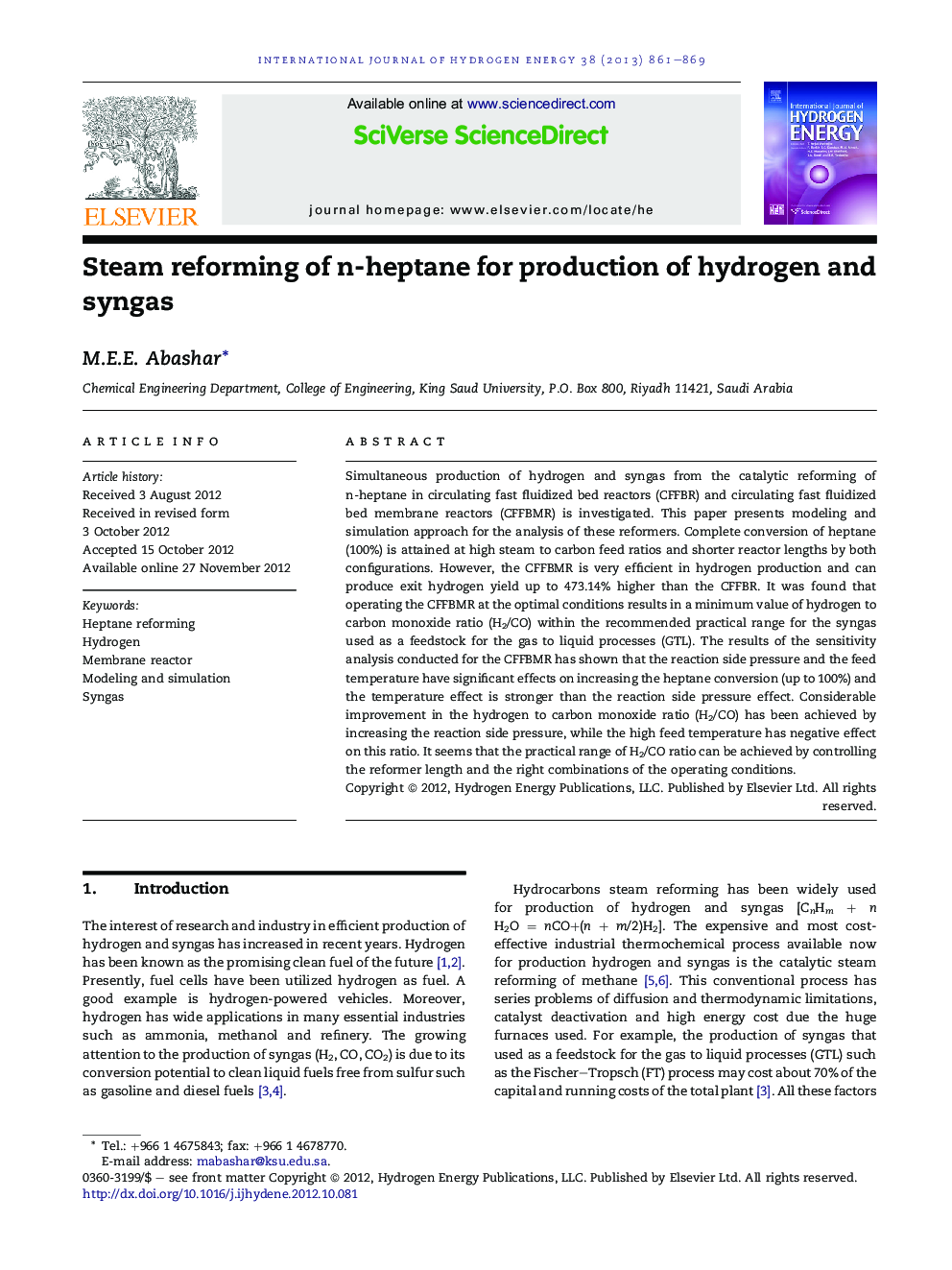| Article ID | Journal | Published Year | Pages | File Type |
|---|---|---|---|---|
| 1282052 | International Journal of Hydrogen Energy | 2013 | 9 Pages |
Simultaneous production of hydrogen and syngas from the catalytic reforming of n-heptane in circulating fast fluidized bed reactors (CFFBR) and circulating fast fluidized bed membrane reactors (CFFBMR) is investigated. This paper presents modeling and simulation approach for the analysis of these reformers. Complete conversion of heptane (100%) is attained at high steam to carbon feed ratios and shorter reactor lengths by both configurations. However, the CFFBMR is very efficient in hydrogen production and can produce exit hydrogen yield up to 473.14% higher than the CFFBR. It was found that operating the CFFBMR at the optimal conditions results in a minimum value of hydrogen to carbon monoxide ratio (H2/CO) within the recommended practical range for the syngas used as a feedstock for the gas to liquid processes (GTL). The results of the sensitivity analysis conducted for the CFFBMR has shown that the reaction side pressure and the feed temperature have significant effects on increasing the heptane conversion (up to 100%) and the temperature effect is stronger than the reaction side pressure effect. Considerable improvement in the hydrogen to carbon monoxide ratio (H2/CO) has been achieved by increasing the reaction side pressure, while the high feed temperature has negative effect on this ratio. It seems that the practical range of H2/CO ratio can be achieved by controlling the reformer length and the right combinations of the operating conditions.
► We model and simulate two reactors for production of hydrogen and syngas. ► High hydrogen yield is obtained by the membrane reactor. ► Optimal conditions are observed and explanations are offered. ► Hydrogen to carbon monoxide ratio can be achieved within recommended range.
